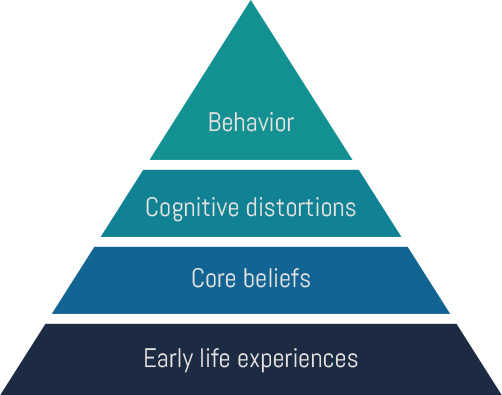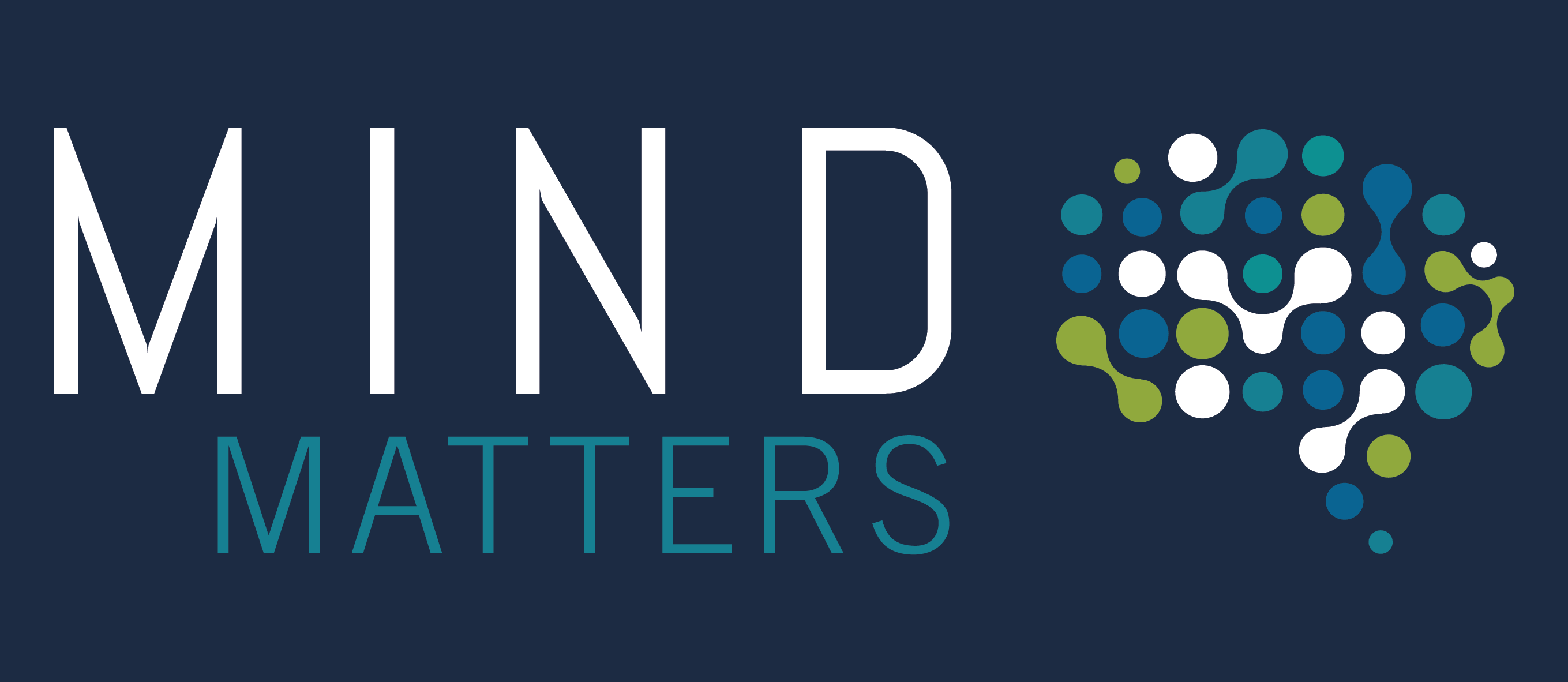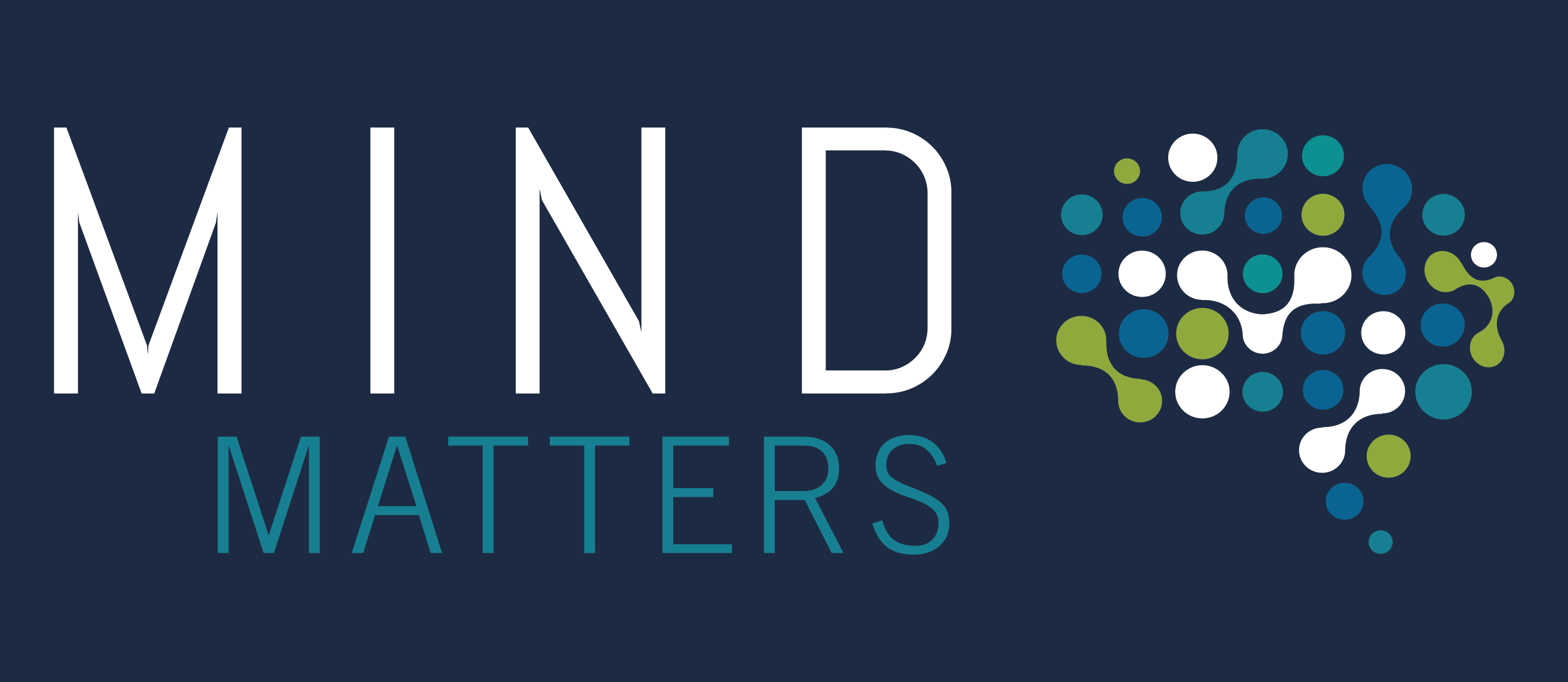

Beneath the surface: How the subconscious core beliefs from our past mold our present and future.
Beneath the surface:
How subconscious Core Beliefs from our past mold our present and future.
BY: DR. MERET CEPERO MALO | January 21, 2024
Have you ever felt like you were not good enough, too undeserving of an opportunity, or too stupid for a task? If so, you are not alone. A recent study estimates that the average person has over 6,000 thoughts per day1, so it’s not surprising that our mind’s ‘inner critic’ pops up from time to time. You can imagine this inner critic as a spokesperson for the Core Beliefs we’ve developed about ourselves – but what exactly are Core Beliefs and where do they come from?
To uncover their origins and explore the profound impact they can have on our self-concept and perception of reality, I signed up for an interactive workshop hosted by Dr. Nadine Sinclair and Paul Sinclair, the co-founders of Mind Matters. Their workshop on Core Beliefs forms part of a 9-week Resilience Training for Researchers. This article is part of a 9-part series in which I recount my experiences from the training..
First Impressions and Second Chances
As a neurobiologist, I’ve always been fascinated by the inner workings of the mind and its biological underpinnings – however, when faced with the prospect of visiting an interactive workshop on Core Beliefs, I wasn’t quite sure what to expect. The idea of “identifying my Core Beliefs” struck me as something straight out of a self-help book or perhaps an esoteric spiritual practice. I couldn’t help but wonder if I’d need to embark on a virtual journey into my innermost dimension during a Zoom meeting, just to wrap my head around the concept. Any initial reservations I had faded away as it became clear that the workshop was designed to cover the intersection of psychology, neuroscience, and personal experience. Through hands-on exercises, participants would not just learn about Core Beliefs but also gain an interactive toolkit to identify and confront them.
What are Core Beliefs?


Core Beliefs are strong convictions about what we perceive to be true regarding ourselves, others, and the world2,3. The conceptual framework around Core Beliefs was developed in the early 1960s by American psychiatrist Dr. Aaron T. Beck. In his sessions, Dr. Beck noticed that his patients’ interpretations of past events played a bigger role in their emotional reaction than the events themselves³. Consequently, when he helped his patients to examine and change their negative automatic thoughts and Core Beliefs, they reported positive changes in their mood regulation and behavioral patterns³. Since then, cognitive behavior therapy (CBT), or the approach of identifying and challenging negative thought patterns to achieve behavior change, has become one of the most practiced forms of psychotherapy in the world.
The Neuroscience of Core Beliefs
At the beginning of the workshop, participants were divided into two groups and given separate instructions for observing a video clip. This exercise laid the groundwork for the attendees to experience their brains working with narratives in real time. Paul and Nadine went on to explain how Core Beliefs shape our internal narratives, thereby ‘tinting the glasses’ through which we see and experience the world.
When it comes to processing beliefs, neuroimaging studies have revealed that our brain activates widespread cortical circuits involved in cognitive-emotional integration, inferential attribution and language functions4–6. A crucial player in this neural symphony is the dorsal medial prefrontal cortex6. This area forms a vital hub, engaging subcortical structures like the thalamus and establishing reciprocal connections with prefrontal and parietal regions of the cortex7. Importantly, brain circuits related to our working memory and the default network are also tightly interwoven with functions like belief evaluation7. This link is easier to understand when we consider the constant predicament our brain is in. Neuroscientist and Psychology professor Dr. Lisa Feldman Barrett puts it like this: “Your brain is trapped in a dark, silent box called your skull. Day in and day out, it continually receives sense data from the outside world via your eyes, ears, nose, and other sensory organs. This data does not arrive in the form of the meaningful sights, smells, sounds, and other sensations that most of us experience. It’s just a barrage of light waves, chemicals, and changes in air pressure with no inherent significance.”8. Thus, to make sense of the world, your brain draws on your memory and internal state to interpret the ambiguous sense data and prepare your body for what to do next.
In his 2021 book ‘Being You: A New Science of Consciousness’, Dr. Anil Seth makes a similar argument when stating that our perception of the world is like living within a controlled hallucination9. Instead of passively receiving information, our brain actively generates predictions about what’s out there, using sensory signals to fine-tune these predictions. Importantly, this applies not just to the external world but also to our self-concept9. The self is not a fixed entity behind our eyes; it’s a perception encompassing aspects like free will, our bodies, emotions, and moods9. Therefore, we experience the world and ourselves with and through the lens of our living bodies. As the brain carefully constructs your present reality, your past experiences and Core Beliefs can shape how you interpret information, and, in turn, these interpretations can reinforce your Core Beliefs. During the workshop, Paul described this two-way-street of perception and interpretation in the following way:
Before our minds could create our experience, our experience created our minds.
PAUL SINCLAIR
Practice your ABCs: an interactive approach to dismantling negative Core Beliefs
Our Core Beliefs can be either empowering or limiting in nature. While empowering beliefs invite positive thoughts that strengthen our resolve and resilience, limiting beliefs can give rise to negative thoughts and emotional reactivity. Usually, our Core Beliefs are developed during our formative years and mainly influenced by our early life experiences and interactions with family members or primary caregivers2. What makes them difficult to detect is that they are usually created and internalized before we have the cognitive capacity to question them10. Once formed, Core Beliefs operate in the background of our minds, oftentimes influencing our perceptions, emotions, and behaviors without us actively being aware of it11. Their subconscious nature can result in many of our Core Beliefs remaining largely unexamined throughout our lifetime.
This observation held true for the workshop attendees, who, like me, were largely unaware of their Core Beliefs before the session. What struck me the most was the widespread presence of negative Core Beliefs among the participants. In a gathering of approximately 50 PhD students and Postdocs from renowned research institutes, each person carried their own set of limiting beliefs like “I am worthless,” “I am unlovable,” or “I am helpless.” Notably, every participant who shared during the session admitted to feeling the impact of these Core Beliefs, particularly in situations that served as triggers.
It was eye-opening to witness the universality of these experiences. Furthermore, witnessing participants becoming aware of their Core Beliefs in real time emphasized that irrespective of surface-level perception, our Core Beliefs reside beneath that surface. Knowing this, Nadine and Paul thoughtfully dedicated the rest of the workshop to a technique aimed at guiding participants through the process of bringing their subconscious Core Beliefs to the surface. The ABCDE model (originally developed by American psychologist Albert Ellis) encourages individuals to explore the link between activating events (A), their beliefs (B) about the activating events, and the resulting emotional and behavioral consequences (C)12. By disputing (D) and reframing negative Core Beliefs in the workshop, participants could develop a more constructive mindset, generating a positive effect (E).
To illustrate the ABCDE model, Nadine and Paul introduced a group exercise and invited two volunteers from the group to share a recent event that upset them. Prior to the exercise, they made sure to brief participants and emphasized the importance of choosing a manageable situation, rather than an emotionally intense event that required more detailed attention. Next, the volunteers were asked to share the core belief that was triggered by the event and describe the emotional consequences they experienced. Having heard the A, B and C of two participants, the other attendees could now chime in and support them in disputing their Core Beliefs. As one of the people who volunteered for this exercise, I found it extremely helpful to have other participants come up with alternative explanations for a situation that had elicited a rather strong emotional reaction from me. Being reminded that our Core Beliefs are not facts (we just consider them to be), allowed me to see the situation in a different light. This shift in perspective opened the door for a responsive approach to similar situations in the future, rather than a reactive one.
Lessons learned – Where do we go from here?
Looking back at the entire resilience training series, I can undoubtedly say that the Core Beliefs workshop left a lasting impression on me. Unveiling the extent to which my Core Beliefs shape my thoughts, emotions, and actions was shocking at first, but later, it became empowering. The workshop equipped me with tools to address my limiting Core Beliefs and change the way they influence my cognitive and emotional landscape.
By recognizing and addressing our negative Core Beliefs, we gain the ability to mold them and rewrite the stories we tell ourselves about our selves. This not only boosts our self-esteem but also enhances our relationships and contributes to a more fulfilling work life. If you’re eager to explore your own Core Beliefs and unlock the door to personal growth, here are a few starting points to consider:
- Start a journaling habit to kickstart regular self-reflection and find the patterns in situations that upset you. Engaging in this practice will allow you to cultivate a deeper understanding of your triggers (activating events). You can also use this journal to track your progress in dismantling your limiting Core Beliefs or responding rather than reacting to triggers.
- Use the ABCDE model to challenge your Core Beliefs (Activating Event – Belief – Consequence – Dispute – Evaluate). You can do this exercise by yourself (in writing), or together with a friend. If you feel comfortable enough to share an example activating event and dispute your Core Beliefs together, you could support each other with finding alternative explanations for someone else’s behavior in a given situation.
- Practice gratitude and celebrate your wins (however small they may be). All too often, our brains construct cognitive distortions around our Core Beliefs and lead us down the path of discounting the positive aspects and achievements in our lives. When we practice gratitude, for example by writing down three good things that we are grateful for at the end of each day, we can interrupt this cycle and shift our mind’s spotlight attention towards a more balanced attitude.
- Seek support. If exploring your Core Beliefs leads to overwhelming emotional reactions and you don’t feel equipped to dismantle them by yourself, reaching out to a counselor or a therapist can provide valuable insights. Remember that you are not alone in this process and it’s okay to ask for help and guidance, especially when doing something as brave as diving beneath your perception’s surface to look for your subconscious Core Beliefs.
As we navigate life, our fundamental experiences of selfhood are rooted in our nature as living beings and influenced by our predictions and beliefs about the world. Understanding the role that Core Beliefs play in constructing our self-concept can raise our awareness to our ‘inner critic’ and empower us to seek out our ‘inner champion’ more often. Ultimately, engaging in practices that allow us to identify, dispute, and change our negative Core Beliefs can pave the way for a more resilient and positive self-perception. By recognizing the power of our Core Beliefs, we gain the ability to reshape our responses to challenges, thereby unlocking our potential for growth and fostering a deeper connection to the vibrant tapestry of our existence.
References:
1. Tseng, J. & Poppenk, J. Brain meta-state transitions demarcate thoughts across task contexts exposing the mental noise of trait neuroticism. Nat. Commun. 11, 1–12 (2020).
2. Beck, J. S. Cognitive Behavior Therapy – Basics and Beyond. (Guilford Press, 2011).
3. Beck, A. T. & Dozois, D. J. A. Cognitive therapy: Current status and future directions. Annu. Rev. Med. 62, 397–409 (2011).
4. Seitz, R. J. & Angel, H. F. Processes of believing – A review and conceptual account. Rev. Neurosci. 23, 303–309 (2012).
5. Seitz, R. J., Paloutzian, R. F. & Angel, H. F. Processes of believing: Where do they come from? What are they good for? F1000Research 5, 1–21 (2016).
6. Seitz, R. J. Believing and Beliefs—Neurophysiological Underpinnings. Front. Behav. Neurosci. 16, (2022).
7. Reid, A. T. et al. Multimodal connectivity mapping of the human left anterior and posterior lateral prefrontal cortex. Brain Struct. Funct. 221, 2589–2605 (2016).
8. Feldman Barrett, L. Your Brain Predicts (Almost) Everything You Do. Mindful.org (2021).
9. Seth, A. Being You: A New Science of Consciousness. (Faber & Faber, 2021).
10. Osmo, F. et al. The negative Core Beliefs inventory: Development and psychometric properties. J. Cogn. Psychother. 32, 67–84 (2018).
11. Wenzel, A. Modificationn of core belifies in cognitive therapy. In standard and innovative strategies in cognitive behavior therapy. InTech (2012).
12. Ellis, A. The Journal of General Rational Psychotherapy. J. Gen. Psychol. 59, 35–49 (1958).
Related post
Building Resilience: What 9 weeks taught me about responding, rather than reacting
The Power of saying “no”: Building stronger relationships with Boundaries
A cup half full: how a positive outlook can fuel perseverance


Dr. Meret Cepero Malo
Dr. Meret Cepero Malo is a writer turned neuroscientist, or a neuroscientist turned writer. While pursuing her Ph.D. in Cellular Neuroscience, she participated in ‘Fast Forward’, a 7-week project management course for researchers, eventually taking on a recurring tutoring role. Now, she has teamed up with Dr. Nadine Sinclair and Paul Sinclair from Mind Matters to offer readers a personal account of her experiences in the 9-week Resilience Training. Get ready to be captivated by her storytelling as she delves into the neurobiological foundations of resilience and shares actionable tips for readers on their own resilience journey.






